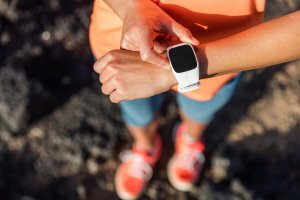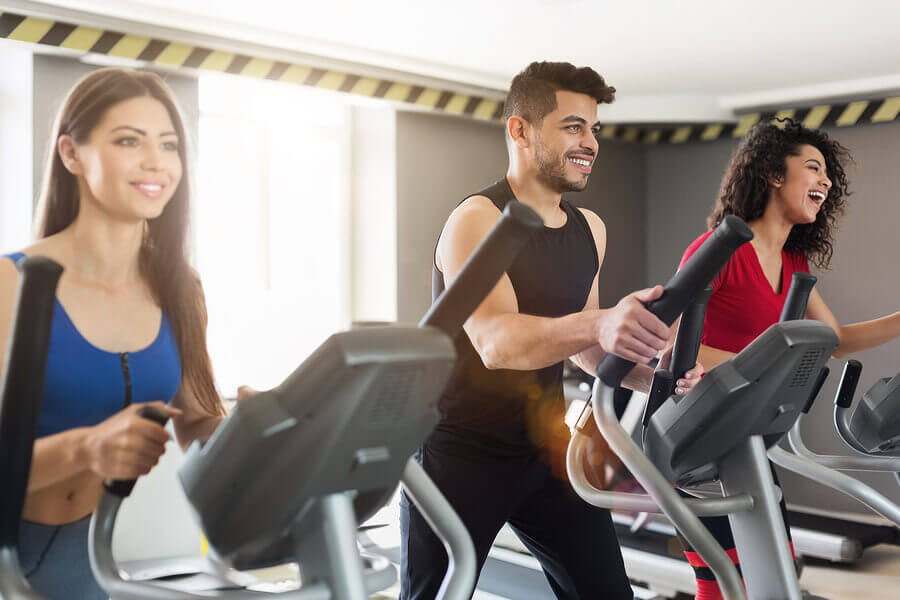Things to Keep in Mind During your Cardio Session

Cardio exercises are imperative for losing weight and enjoying other health benefits. There are certain aspects that you should consider during your cardio session in order to enjoy its benefits and prevent potential problems.
Cardio, cardiovascular or aerobic exercise, refers to movements that increase your heart rate in addition to those that use oxygen to burn fat and generate energy for muscles.
Doing cardio can increase your respiratory capacity, strengthen your muscles, burn calories, improve blood circulation and more. The most popular cardiovascular activities include running, HIIT workouts, cycling, and jogging.
Essential aspects for a cardio session
When you get ready for a cardio session, pay attention to the details to stay safe and ensure an efficient workout. Check out our list below.
1. Make sure you understand the exercise
Regardless of the cardiovascular exercise that you’re about to tackle, make sure you know how to do it correctly. Sometimes we brush over the technique because we see it as a simple exercise, but you should play it safe.
Following through an exercise without making mistakes is essential. Failing to do so could expose you to serious injuries, especially in high-impact cardio sessions.
2. Diet and hydration
Diet and hydration play a vital role in sport and general well-being. Your body needs enough nutrients, vitamins, and minerals to carry on with its basic functions.
In light of that, your pre-workout diet should be balanced and appropriate for your activities. Working out without fueling up properly is the worst thing you can do to your body. On top of performing poorly, it’s dangerous and you can become lightheaded, suffer a drop in heart rate or even feel faint.

Additionally, you should also hydrate before, during and after your workout. When you sweat, you lose water and electrolytes. As a result, you’re more likely to suffer from cramps.
3. Never skip your warm-up before your cardio session
Aerobic exercises can be extremely demanding because they speed up your heart rate and increase blood flow. Considering those changes, preparing your body for the workout to come is actually essential for staying healthy.
There are plenty of ways to warm up but you should always do it before starting cardio. Why? Your joints need to lubricate themselves, your muscle tissues need to prepare and your body needs to get ready for your workout.
If you skip your warm-up, your physical performance suffers and you can’t make the most out of your session. Additionally, your risk of muscle soreness or injuries increase.
4. Control your breathing
While your body should be ready to workout after warming up, finding a stable breathing pattern can be tricky sometimes depending on the difficulty of your workout.
So, learning how to control and stabilize your breathing progressively is fundamental for improving your physical ability. Your body needs a good supply of oxygen to distribute to all of your muscle tissue.
5. Don’t go overboard
Wanting fast results is understandable, especially if you’re seeing great improvement along the way. But you don’t have to push your body past its limits.
Instead, build your stamina over time. Be patient and refrain from cardio workouts that are excessively hard if you’re not physically ready for them. Pushing yourself well past your limits could make you more vulnerable to injuries.

6. Stretch after your cardio session
Wrap up your aerobic session by stretching to release muscle tension and bring your breathing and heart rate back to normal. Stretching also helps your muscles from tightening in addition to the soreness that can result from working out. It also increases your flexibility and prevents cramps and injuries.
Every athlete and person who works out on a regular basis should include cardio in their routines. As we mentioned earlier, it burns fat, helps define muscles, builds stamina and works out your heart.
All these factors are essential for making the most of your cardio session. They might seem like minor details, but they make a big difference. Try them for yourself!
Cardio exercises are imperative for losing weight and enjoying other health benefits. There are certain aspects that you should consider during your cardio session in order to enjoy its benefits and prevent potential problems.
Cardio, cardiovascular or aerobic exercise, refers to movements that increase your heart rate in addition to those that use oxygen to burn fat and generate energy for muscles.
Doing cardio can increase your respiratory capacity, strengthen your muscles, burn calories, improve blood circulation and more. The most popular cardiovascular activities include running, HIIT workouts, cycling, and jogging.
Essential aspects for a cardio session
When you get ready for a cardio session, pay attention to the details to stay safe and ensure an efficient workout. Check out our list below.
1. Make sure you understand the exercise
Regardless of the cardiovascular exercise that you’re about to tackle, make sure you know how to do it correctly. Sometimes we brush over the technique because we see it as a simple exercise, but you should play it safe.
Following through an exercise without making mistakes is essential. Failing to do so could expose you to serious injuries, especially in high-impact cardio sessions.
2. Diet and hydration
Diet and hydration play a vital role in sport and general well-being. Your body needs enough nutrients, vitamins, and minerals to carry on with its basic functions.
In light of that, your pre-workout diet should be balanced and appropriate for your activities. Working out without fueling up properly is the worst thing you can do to your body. On top of performing poorly, it’s dangerous and you can become lightheaded, suffer a drop in heart rate or even feel faint.

Additionally, you should also hydrate before, during and after your workout. When you sweat, you lose water and electrolytes. As a result, you’re more likely to suffer from cramps.
3. Never skip your warm-up before your cardio session
Aerobic exercises can be extremely demanding because they speed up your heart rate and increase blood flow. Considering those changes, preparing your body for the workout to come is actually essential for staying healthy.
There are plenty of ways to warm up but you should always do it before starting cardio. Why? Your joints need to lubricate themselves, your muscle tissues need to prepare and your body needs to get ready for your workout.
If you skip your warm-up, your physical performance suffers and you can’t make the most out of your session. Additionally, your risk of muscle soreness or injuries increase.
4. Control your breathing
While your body should be ready to workout after warming up, finding a stable breathing pattern can be tricky sometimes depending on the difficulty of your workout.
So, learning how to control and stabilize your breathing progressively is fundamental for improving your physical ability. Your body needs a good supply of oxygen to distribute to all of your muscle tissue.
5. Don’t go overboard
Wanting fast results is understandable, especially if you’re seeing great improvement along the way. But you don’t have to push your body past its limits.
Instead, build your stamina over time. Be patient and refrain from cardio workouts that are excessively hard if you’re not physically ready for them. Pushing yourself well past your limits could make you more vulnerable to injuries.

6. Stretch after your cardio session
Wrap up your aerobic session by stretching to release muscle tension and bring your breathing and heart rate back to normal. Stretching also helps your muscles from tightening in addition to the soreness that can result from working out. It also increases your flexibility and prevents cramps and injuries.
Every athlete and person who works out on a regular basis should include cardio in their routines. As we mentioned earlier, it burns fat, helps define muscles, builds stamina and works out your heart.
All these factors are essential for making the most of your cardio session. They might seem like minor details, but they make a big difference. Try them for yourself!
All cited sources were thoroughly reviewed by our team to ensure their quality, reliability, currency, and validity. The bibliography of this article was considered reliable and of academic or scientific accuracy.
- Zamorano, V. G., Peinado, A. B., Benito, P. J., & Calderón, F. J. (2013). Respuesta de la frecuencia cardíaca de anticipación y recuperación en función del nivel de entrenamiento aeróbico. Archivos de Medicina Del Deporte, 30(156), 202–207.
- Serratosa Fernández, L. (2001). Adaptaciones cardiovasculares del deportista. In 2do. Congreso Virtual de Cardiología Congreso Internacional de Cardiología por Internet. Retrieved from http://www.fac.org.ar/scvc/llave/PDF/serratoe.PDF
- Arboleda, N. L. H. (2008). Beneficios del ejercicio. Catálogos Médicos Universidad de Caldas, 8, 77–91. https://doi.org/10.1017/CBO9781107415324.004
- Woods, K., Bishop, P., & Jones, E. (2007). Warm-up and stretching in the prevention of muscular injury. Sports Medicine. https://doi.org/10.2165/00007256-200737120-00006
This text is provided for informational purposes only and does not replace consultation with a professional. If in doubt, consult your specialist.








